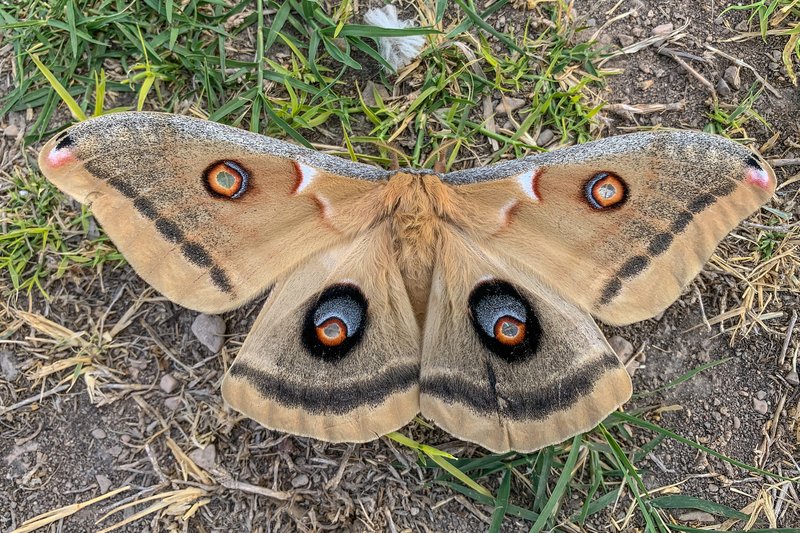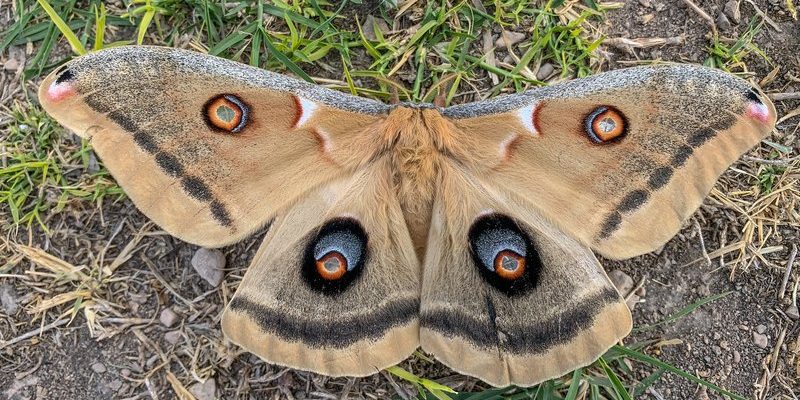
Imagine slipping down into a comfy chair, coffee in hand, and diving into a world that’s alive with colors, behaviors, and surprising facts. That’s what we’ll explore here. Moths are not just dusty little creatures; they have fascinating traits and characteristics that make them truly unique in the animal kingdom. So, let’s lift the veil on this intriguing world and uncover some astonishing facts about these winged marvels!
Moths vs. Butterflies: The Family Feud
Here’s the thing: while moths and butterflies belong to the same order, Lepidoptera, they have some key differences. For starters, moths are generally nocturnal, meaning they’re more active at night, whereas butterflies are daytime flyers. Imagine butterflies as the social butterflies at a sunlit garden party, while moths are the mysterious guests who arrive when the moon is high.
Moths often have a furry body and drab colors, which help them blend into their surroundings. This camouflage is a clever survival tactic, making it harder for predators to spot them. Butterflies, on the other hand, flaunt vibrant colors that serve as warnings to potential threats about their toxicity. So, if you see a colorful butterfly, just know it’s wearing its bright costume with pride!
Also, let’s talk antennae. Moths usually have feathery or plume-like antennae, which help them sense scents in the air. Butterflies have thinner, club-shaped antennae. Think of moths as the aromatic detectives of the night world, using their advanced senses to find food.
The Incredible Diversity of Moths
Moths come in all shapes and sizes—there are over 160,000 species known! Some are as small as a fingernail, while others can have a wingspan of up to 12 inches, like the Giant Silk Moth. It’s like watching a mini nature documentary right in your backyard when these creatures start fluttering around.
One fascinating example is the Vampire Moth. Yes, you read that right! This moth feeds on the blood of other animals. It uses its specialized mouthparts to pierce the skin and draw blood. The idea may sound a bit creepy, but it’s an excellent example of how diverse and adaptable moths can be. There’s even the Hawk Moth, known for its impressive hovering abilities—it can stay still in mid-air, like a hummingbird!
Moths vary widely in habitat too. You can find them in deserts, forests, and even your home! Each species has unique adaptations that allow them to thrive in different environments. It’s like exploring a hidden treasure trove of life when you start looking for these creatures.
Moth Behavior: The Night Flyers
Moths have some pretty cool behaviors that set them apart. For example, many species are known to be phototropic, meaning they’re attracted to light. You might have noticed this when a moth flutters around your outdoor lamp. Scientists believe this attraction helps them navigate using the moonlight. However, artificial lights can confuse them, leading to a bit of a chaotic dance around your porch.
During the day, moths tend to rest in protected spots, folding their wings around their bodies to camouflage themselves. It’s almost like they’re wrapping themselves in a cozy blanket, hiding from potential predators. Some even mimic tree bark or leaves, making them practically invisible. It’s a fascinating survival strategy, and nature’s way of saying, “Blend in!”
Another interesting behavior is their mating rituals. Male moths often use pheromones—chemical signals—to attract females from a distance. It’s as if they’re sending out a scented invitation to a romantic evening. When they find their mate, the courtship can take on various forms, including elaborate flights and dances. It’s a bit like a dance-off under the stars!
The Role of Moths in the Ecosystem
Moths might seem small, but they play a big role in our ecosystems. They’re essential pollinators, much like bees. Many plants depend on moths to transfer pollen as they feed on nectar, especially in the evening. Imagine night-blooming flowers eagerly awaiting their furry pollinators to help them reproduce.
Additionally, moths serve as a vital food source for various animals, including birds, bats, and even other insects. They hold an essential place in the food web, helping to maintain balance in nature. Without them, many ecosystems would face disruptions, illustrating how connected everything is.
Moths also contribute to soil health. As they go through their life stages—from larvae to adults—they help break down organic matter and enrich the soil. So, while they may be flitting about in the shadows, they’re quietly doing their part to keep our environment healthy.
Surprising Lifespan of Moths
You might be surprised to learn that the lifespan of a moth varies greatly among species. While some may only live for a few days, others can live for several months. The Luna Moth, for example, has a short adult life, lasting just about a week—its sole purpose is to reproduce. You could say this moth lives life in the fast lane, focusing entirely on passing on its genes.
Interestingly, many moths spend a significant portion of their lives as larvae (caterpillars) before transforming into adults. This larval stage can last for months or even years, depending on the species and environmental conditions. So, while adult moths may have a brief time to shine, their earlier life stages are filled with growth and development.
The transformation from caterpillar to moth is quite magical, too. It involves a process called metamorphosis, where the caterpillar forms a chrysalis, undergoing a complete transformation. Imagine going to bed as a caterpillar and waking up as a moth—talk about a glow-up!
Moths and Their Unique Defenses
Moths have evolved some pretty clever ways to defend themselves from predators. One of the most notable defenses is their incredible ability to blend into their surroundings. As mentioned, many species have evolved to mimic tree bark or leaves, making them virtually invisible when they’re resting during the day.
Some moths also have the ability to produce sounds to ward off predators. For example, the Tiger Moth can produce ultrasonic clicks that confuse and deter bats—its main predator. It’s as if the moth is blasting a warning signal, telling the bat, “Not today!”
Another fascinating adaptation is the ability to release chemicals when threatened. The Hummingbird Moth can emit a scent that mimics the smell of toxic plants, tricking predators into thinking it’s dangerous. It’s nature’s way of using creativity to stay one step ahead in the survival game.
Conservation Efforts for Moths
Despite their importance, moth populations are declining in many areas due to habitat loss, light pollution, and pesticides. Conservation efforts focused on protecting these delicate creatures are more crucial than ever. You might be wondering, “What can I do to help?” There are plenty of simple steps you can take.
Creating a moth-friendly garden is a great start. Planting night-blooming flowers and avoiding pesticides can provide both food and shelter for these amazing insects. You can also consider installing a small outdoor light that attracts moths while minimizing the impact of artificial lighting.
Participating in local moth surveys or citizen science projects is another way to contribute. By helping researchers track moth populations, you’ll play an essential role in understanding and protecting these fascinating creatures.
Moths in Culture and Myths
Moths have inspired many stories and myths throughout history. For instance, in ancient cultures, moths were often seen as symbols of transformation and rebirth due to their incredible metamorphosis. In some Native American cultures, moths are believed to carry messages from the spirit world, guiding the living with their nocturnal presence.
You might have even heard phrases like “moth to a flame” in popular culture, symbolizing the allure of danger or temptation. Moths have captured the human imagination for generations, and they continue to do so today.
In literature and art, they’re often depicted as symbols of mystery and the unknown. Their quiet presence at night makes them the perfect subjects for tales that explore the beauty and eeriness of the world after dark.
In summary, moths are not just simple insects; they’re fascinating creatures that play vital roles in our ecosystems, spark creativity, and deserve our appreciation. From their incredible diversity to their unique adaptations, there’s a lot to love about these winged wonders.
So, next time you see a moth flitting about, remember the remarkable world it comes from—it’s more than just an insect; it’s a little miracle of nature waiting to unfold its story!

